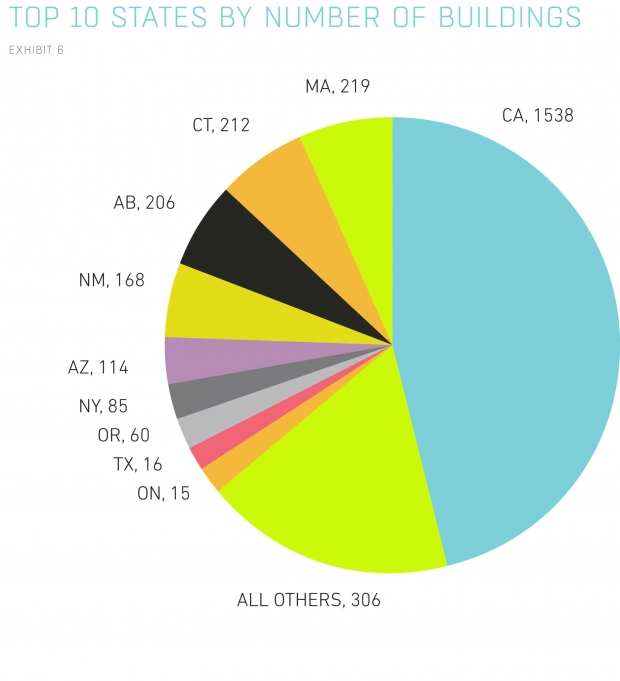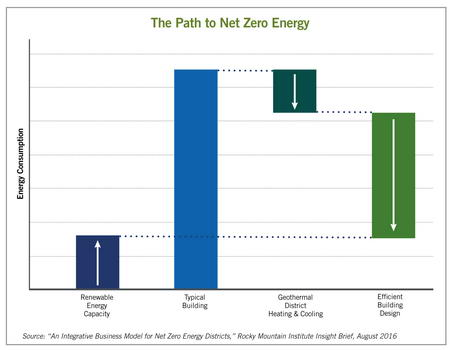Energy consumption and energy efficiency are taken to another level
By Janis Kreilis
Net-zero buildings represent the pinnacle of energy efficiency and renewable technology. Designed to produce as much energy through the use of renewables as they consume from external connections such as the grid (with the help of efficient building design) over a year, net-zero structures offer what was once thought impossible: all the amenities of a residential or a commercial space without any energy bills.
As our cities have grown and expanded their energy footprint accordingly, reaching 70 percent of the global energy consumption, topics relating to energy consumption and energy efficiency have become more important. Alongside this growth, cities in the U.S. are also experiencing a trend towards centralization and movement upwards, instead of outwards, as the younger generations increasingly prefer living in walkable, well-connected districts full of workplaces, entertainment and shopping opportunities to moving out to the suburbs.
Companies, too, have followed suit in minimizing their carbon footprint. Apple’s new headquarters in Cupertino, California, will be one of the world’s largest net-zero buildings when it is finished. Housing more than 14,000 people, the so-called “mothership” (because of its circular shape) will use passive heating and cooling systems as well as fuel cells, hot water storage, and other technologies to drive down its energy demand. On the flip side, solar panels and renewable energy purchased from the grid during peak demand periods will help the new campus achieve net-zero status.
Over the years since 2010, when the National Renewable Energy Laboratory (NREL) constructed its net-zero research facility, NREL alone has advised on more than 50 commercial net-zero projects in the U.S., and the market interest is growing. According to the Net-Zero Coalition, an industry group, currently, there are more than 3,300 net-zero energy buildings in the U.S., with California leading the pack. The Golden State is also the most progressive in terms of policy support for net-zero buildings: the state wants to require all newly built residential units to be net-zero by 2020.

Source: Net-Zero Coalition
However, what if achieving net-zero status would be too costly for a single building, while another building next to it could be a net producer of energy?
Enter net-zero districts, an extension of the net-zero building concept, which aggregates the energy input and output over a certain cluster of buildings over a year to reach the goal of net-zero combined.
Denver, Colorado is currently working on two such districts. One of them, the National Western Center, will take up 250 acres and house an education center for agriculture. The other development is the 80-acre Sun Valley neighborhood, where the Denver Housing Authority is looking at ways to rebuild some structures with higher efficiency and use technologies such as solar panels and district heating to get to the net-zero goal.
Both of these developments are part of the Zero Energy Districts accelerator of the Department of Energy which will provide the developers with technical support and resources. The participants will share the business cases and plans for operations to help develop similar projects in other cities.

Source: NAIOP
Net-zero districts allow developers to share resources among the buildings in the campus, which can lead to considerable economies of scale. For example, district heating and cooling, designed properly, can lower the overall energy consumption of the entire development as opposed to having similar units in each of the buildings. However, the complexity of calculations also increases considerably. For the planning stage, net-zero districts offer the developers a multitude of options for meeting the requirements. And, when the project starts operating, measuring its energy input and output becomes more difficult on a district scale.
Nevertheless, according to the Commercial Real Estate Development Association, net-zero districts will likely become a “major driver” behind new, highly efficient buildings connected to a smart electric grid. Going along with the trend towards mixed-use clusters in our cities, net-zero districts present a real opportunity for getting more while using less.

